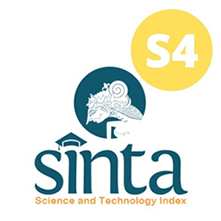Design of a Safety Device Ultra Violet Light for Mercury Identification in Whitening Cream with Thin Layer Chromatography Method Using Camera OV7670 Based on Arduino Uno
Abstract
Mercury is also called “air raksa” or hydrargyrum which is a chemical element with the symbol Hg and belongs to the heavy metal group with a liquid form and silvery color. Mercury is a heavy metal that is harmful to the skin when added to cosmetics, especially creams on the face, even in small concentrations because it is toxic. Identification of Mercury in the laboratory using the thin layer chromatography method with the help of ultra violet light causes medical personnel to be vulnerable to exposure to ultra violet rays which have a negative impact on eye and skin health. The purpose of this research is to design a safety to minimize exposure to ultra violet rays when identify mercury. OV76070 which can reduce direct contact with ultra violet light identifies the present of Mercury in the whitening cream will be carried out using a thin layer chromatography separation method with the help ultra violet 254nm-366nm. With the help of ultra violet lamps 254nm-366nm, and it is hoped that Mercury inspection using the OV7670 camera will be more efficient and accurate. The tool used in this research is the OV7670 camera with a power of 640 – 460 pixels (VGA) to take photo on thin layer chromatography plate, ultra violet lamps 254nm- 366nm. Overall the design of this tool is controlled by the Arduino Uno microcontroller. Image from the OV7670 camera can be monitored at the Liquid Crystal Display in the form of the appearance fluorescence spot indicating the presence of Mercury in the whitening cream sample.

This work is licensed under a Creative Commons Attribution-ShareAlike 4.0 International License.
Authors who publish with this journal agree to the following terms:
- Authors retain copyright and grant the journal right of first publication with the work simultaneously licensed under a Creative Commons Attribution License that allows others to share the work with an acknowledgement of the work's authorship and initial publication in this journal.
- Authors are able to enter into separate, additional contractual arrangements for the non-exclusive distribution of the journal's published version of the work (e.g., post it to an institutional repository or publish it in a book), with an acknowledgement of its initial publication in this journal.
- Authors are permitted and encouraged to post their work online (e.g., in institutional repositories or on their website) prior to and during the submission process, as it can lead to productive exchanges, as well as earlier and greater citation of published work (See The Effect of Open Access).











